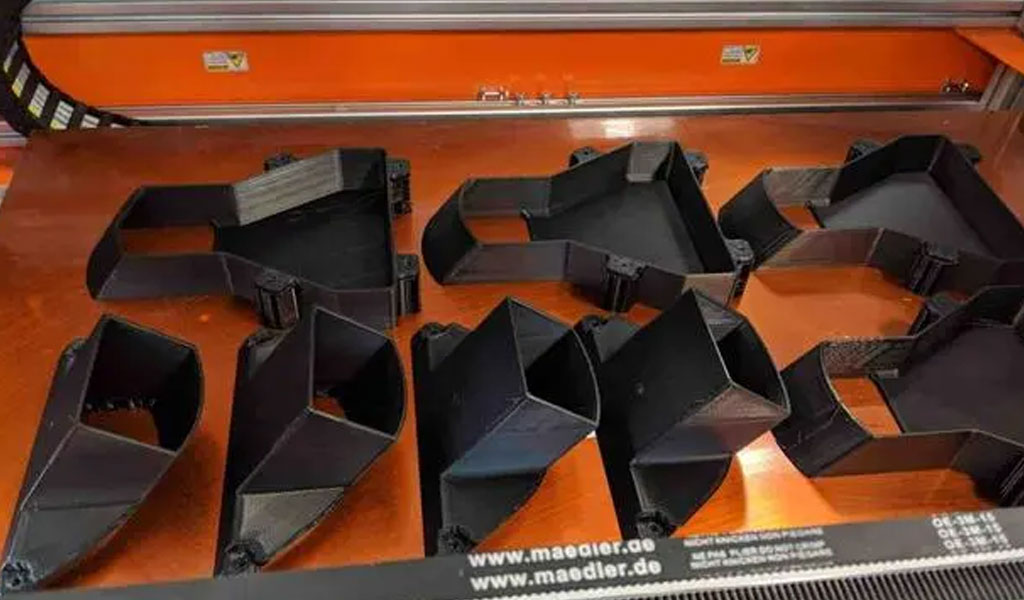
The Define Of 2011 Aluminum
2011 Aluminum is a high-strength alloy primarily composed of aluminum, copper, and small amounts of other elements such as iron, manganese, and silicon. It belongs to the 2000 series of aluminum alloys, which are known for their excellent machinability.
The addition of copper to the composition of cnc machining 2011 Aluminum provides enhanced strength and mechanical properties. This alloy also contains a small amount of lead, which improves chip formation and lubrication during machining processes. Due to its high strength and good machinability, 2011 Aluminum is commonly used for screw machine parts, fittings, and components that require both strength and ease of machining.
It is worth noting that 2011 Aluminum is not as corrosion-resistant as some other aluminum alloys. However, it still offers reasonable resistance to atmospheric corrosion. When compared to alloys like 6061 Aluminum, 2011 Aluminum may be less suitable for applications that require high corrosion resistance, such as marine environments.
2011 Aluminum is a high-strength alloy with good machinability, primarily used for parts and components where strength and ease of machining are important considerations.
The Define Of 6061 Aluminum
6061 Aluminum is a versatile alloy that is widely used in various industries, including aerospace, automotive, marine, construction, and general engineering. It belongs to the 6000 series of aluminum alloys, which are known for their excellent combination of strength, weldability, and corrosion resistance.
The composition of 6061 Aluminum consists mainly of aluminum, magnesium, and silicon, with smaller amounts of copper, chromium, zinc, and other elements. These alloying elements contribute to its desirable properties.
Key characteristics of 6061 Aluminum include:
- Strength: 6061 Aluminum exhibits excellent strength, making it suitable for structural applications. It has good tensile strength and yield strength, allowing it to withstand heavy loads and stresses.
- Machinability: Although not as easily machined as some other aluminum alloys, 6061 Aluminum machining is still considered to have good machinability. With the right tools and techniques, it can be effectively machined to produce precise and intricate parts.
- Corrosion Resistance: 6061 Aluminum offers good corrosion resistance, particularly when it is properly treated or anodized. Anodizing forms a protective layer on the surface, enhancing its resistance to atmospheric corrosion and improving its durability.
- Weldability: 6061 Aluminum is highly weldable, allowing for the fabrication of welded structures and components. It can be successfully welded using various methods, including TIG (tungsten inert gas) welding and MIG (metal inert gas) welding.
- Applications: Due to its desirable properties, 6061 Aluminum has a wide range of applications. It is used in the aerospace industry for aircraft structures, in the automotive industry for parts like frames and wheels, in marine applications for boat hulls and components, in construction for structural elements, and in general engineering for a variety of components that require strength, corrosion resistance, and weldability.
6061 Aluminum is a versatile alloy with excellent strength, machinability, corrosion resistance, and weldability. It is widely used in various industries for applications that require a combination of these properties.
The Difference Of 2011 Aluminum And 6061 Aluminum
2011 Aluminum and 6061 Aluminum are both widely used alloys in the construction and manufacturing industries. Here are the key differences between them:
Composition:
- 2011 Aluminum: It is a high-strength alloy primarily composed of aluminum, copper, and a small amount of other elements like iron, manganese, and silicon.
- 6061 Aluminum: It is a versatile alloy composed mainly of aluminum, magnesium, and silicon, with smaller amounts of copper, chromium, zinc, and other elements.
Strength:
- 2011 Aluminum: It has lower tensile strength and yield strength compared to 6061 Aluminum.
- 6061 Aluminum: It is known for its excellent strength, making it a preferred choice for structural applications.
Machinability:
- 2011 Aluminum: It has excellent machinability due to the presence of lead as an alloying element, which improves chip formation and lubrication during machining.
- 6061 Aluminum: While it is also machinable, it is not as easily machined as 2011 Aluminum. However, it can still be effectively machined with the right tools and techniques.
Corrosion Resistance:
- 2011 Aluminum: It offers good resistance to atmospheric corrosion but is less corrosion-resistant than 6061 Aluminum.
- 6061 Aluminum: It has excellent corrosion resistance, particularly when anodized, which makes it suitable for outdoor and marine applications.
Applications:
- 2011 Aluminum: It is commonly used for screw machine parts, fittings, and components requiring high strength and good machinability.
- 6061 Aluminum: It finds applications in various industries, including aerospace, automotive, marine, construction, and general engineering, where strength, corrosion resistance, and weldability are important.
In summary, while both alloys have their advantages, 6061 Aluminum offers superior strength, corrosion resistance, and broader application possibilities compared to 2011 Aluminum. However, 2011 Aluminum is valued for its excellent machinability, particularly for intricate parts.